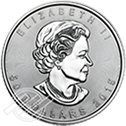Cryptocurrency vs. Digital Currency: What’s the Difference?
Cryptocurrency and digital currency. Their names sound similar.
They’re both money that exists in cyberspace.
It’s logical to think there must not be any difference when comparing digital currency vs cryptocurrency. But that’s far from the truth.
While digital currency and cryptocurrency share some traits, they are vastly different and serve different purposes.
We’ll look at the properties of both and explore how we use cryptocurrency vs. digital currency in real-world applications.
The difference between cryptocurrency and digital currency may be greater than you think.
What Is Cryptocurrency?
Cryptocurrency is one of many types of digital currency. It is used as a method of payment or as a speculative investment.
Cryptos—as cryptocurrencies are sometimes called—are created (mined) using an encryption algorithm and work on a decentralized blockchain network.
There are hundreds of cryptocurrencies. Some of the most popular are:
- Bitcoin
- Litecoin
- Ethereum
- XRP (Ripple)
- Dogecoin
You hold coins in a virtual wallet that is either cloud-based or stored on your mobile device or computer.
Many use cryptocurrencies as a form of payment.
Coin holders privately transfer their coins directly to another wallet holder in exchange for goods or services.
Many also purchase cryptocurrencies as a speculative investment tool.
With a combined global market cap of over $1 trillion, cryptos often trade with robust volume.
Some investors try to get in on the ground floor of a newly available crypto. They may hold it or cash out as the coin gains popularity and increases in value.
The crypto market can be quite volatile. There have been many fortunes made and lost betting on crypto.
What is Digital Currency?
Digital currency is money that is exchanged, stored, and managed over the internet, in the cloud, or virtually on an app.
While all cryptocurrencies are digital currencies, all digital currencies are not cryptocurrencies.
The types of digital of digital currency include:
- Cryptocurrency
- Virtual currency
- Central bank digital currency (CBDC)
- Fiat-based digital currency
Even if you’re not a crypto enthusiast, you’ve probably used digital currency without knowing it.
Most of the world’s money supply is managed by intermediaries—primarily banks and financial institutions—and held on computers. The banks hold their money with the Federal Reserve, and it is mostly accessed digitally. Most of us use digital currency every day.
The word fiat refers to currency not backed by tangible physical commodities like gold or silver. One example would be the dollar.
Fiat-based digital currencies are funds accessed through things like debit cards. Funds move digitally when someone uses the card for goods and services.
Conversely, the value of an asset-backed account that isn’t digital—such as a Gold IRA and Silver IRA—is pegged to the price of the underlying asset that backs it.
Physical gold and silver—bars and coins—determine the worth of the account.
Key Differences Between Digital Currency vs. Cryptocurrency
There really is no battle when it comes to digital currency vs. cryptocurrency.
While there is some overlap in usage, each has its distinct utility and rules.
Centralization vs. Decentralization
Traditional, fiat-based digital currencies exist on a centralized platform.
Centralized chains employ banks, financial institutions, and governments as intermediaries between the parties involved.
The intermediaries control the inner workings and give permission to the trade. They also record the transactions and transfer the funds.
Digital currency networks are private. Only those given access can participate.
The intermediary facilitates the transaction between the parties. The intermediary can decide what the parties can or can’t execute.
Centralized networks are not anonymous. Each transaction attaches a plethora of personal information belonging to the sender and receiver.
Crypto blockchain is decentralized. It is public and anyone can participate. There is no one authority that controls the network.
Transactions are processed directly between two parties—the sender and the receiver—and do not require a middle man like a bank or credit union.
The cryptocurrency blockchain affords anonymity.
Any change in the blocks that make the chain have to be agreed upon by the participating parties. This system makes crypto difficult to alter or hack.
Technology and Infrastructure
Cryptocurrencies are stored in a digital wallet. Each wallet is accessed by a private key.
If the private key is stolen or lost, it can’t be recovered. The crypto assets can be moved by the current key holder or they are gone. In this circumstance, anonymity works against you.
Digital currencies typically access fiat currencies stored in a financial institution.
You are assigned a card and a password that gives you access to the account.
There is very little privacy with digital currency.
Digital currency transactions are identified by the account holder’s personal information and information assigned by the institution.
If passwords are lost or stolen, the account holder can easily change them. Account activity can instantly be halted, and stolen funds can be replaced.
Regulatory Framework
The gap between crypto vs digital currency may best be exemplified by how each is regulated.
The meteoric rise of cryptocurrency may have caught governments sleeping.
Many dismissed cryptocurrency as a passing fad or even a fool’s errand. Governments seemed to ignore it, and many didn’t feel the need to begin the discussion on crypto legislation.
As cryptos gained popularity and value, countries scrambled to enact regulations and legislation. Many have found it difficult to oversee and control something that was built to not be controlled.
Much of the crypto world is still the wild, wild west. It can sometimes be prone to fraud, wild price fluctuations, and market manipulation.
Digital currency instruments are the polar opposite.
Traditional financial accounts—like those using digital currency—are highly regulated by a series of rules and regulations.
There are checks and balances with most every form of financial instrument.
Institutions are required to keep accurate accounting of every transaction.
They must provide records and reporting to auditors and oversight agencies.
Government regulation helps keep financial markets safe and stable.
Use Cases of Cryptocurrency
Cryptocurrency can be a great way for those who are away to send money back home.
Sending crypto across borders eliminates the extra fees of an intermediary. Funds are verified and cleared through the blockchain process, and are available immediately.
The transaction is private—no one knows that money was ever sent or received—which makes the transaction much safer.
Shop owners around the world accept cryptocurrency as payment.
Transacting in crypto reduces transaction fees and eliminates the need to convert one country’s currency into another’s.
Owners are assured that deals are final and cannot be fraudulently charged back.
Use Cases of Digital Currency
Central bank digital currency(CBDC) is being tested or implemented by many governments.
CBDC is a digital version of a country’s fiat currency.
Issued by the central bank, this form of digital currency is backed by the full faith and credit of the government—just like paper money.
Governments plan on using digital currency to compliment the current system.
CBDC address the following needs:
- Financial inclusion for unbanked and underbanked populations
- Lowering transaction costs
- Offering cheaper and easier access to money
- Provide a way for fiscal and monetary policy to be implemented
The Future of Both Cryptocurrency and Digital Currency
The future seems bright for both cryptocurrency and digital currency.
Digital currency continues to expand and offer new forms such as virtual currency.
Virtual currency is issued by developers of a virtual platform, and is used as a form of electronic payment or store of value.
Virtual currency is accepted and used by members of a specific virtual community, and typically has no value outside that community.
Frequent flier miles are an example of virtual currency.
Many developers are choosing to use virtual currency vs cryptocurrency for in-game purchases.
Central banks of governments around the world are exploring the viability of central bank digital currency. Some nations, including several in the Caribbean, have already implemented CBDC systems.
Crypto is etched into the fabric of modern society.
There are crypto ATMs, and more businesses are accepting various cryptocurrency as payment.
Cryptocurrency exchanges—similar to stock exchanges—have popped up. Speculators can buy and sell 24 hours a day, seven days a week.
Whether it’s the ease and privacy of payment, or the speculative thrill of big potential gains, crypto has the world’s attention.
Some investors choose to keep their savings in paper and digital form, but roll over or transfer their retirement plans into tangible assets such as gold and silver.
The precious metals IRA, the Gold IRA, and the Silver IRA are self-directed individual retirement accounts.
Self-directed plans allow you to own physical assets—gold and silver that you can hold in your hand—to complement your digital currency.
For nearly a decade, Advantage Gold has been helping clients build a strong financial foundation rooted in physical assets while the rest of the world goes digital.
Call us today or click the link and tell us how to contact you.
We’re happy to help.
Tags: crypto vs digital currency, cryptocurrency vs digital currency, difference between digital currency and cryptocurrency, virtual currency vs cryptocurrency


